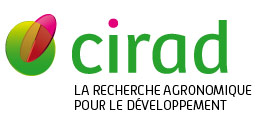Interconnection of a crop growth model with remote sensing data to estimate the total available water capacity of soils
Todoroff P., De Robillard F., Laurent J.B.. 2010. In : Proceedings IEEE International Geosciece and Remote Sensing Sinposium and IGARSS 2010, July 25-30, 2010, Honolulu, Etats-Unis. Honolulu : IEEE, p. 1641-1644. International Geoscience and Remote Sensing Symposium, 2010-07-25/2010-07-30, Honolulu (Etats-Unis).
A number of decision support tools used in agriculture for the management of crops production are based on GIS or remote sensing data interfaced with agronomic models [1]. One of their fundamental advantages is to take into account the geographic heterogeneity of the environmental growth conditions. The total available water capacity of the soil (TAWC) is one of the determining factors in the crop growth. It depends on the soil depth and soil physical characteristics: the soil water content at permanent wilting point and at field capacity. The computation of this parameter from laboratory and/or field measurements for large regions is often far beyond the means of agricultural sector stakeholders in emerging countries. We developed a simple and robust technique to estimate this parameter from optical satellite images and a dynamic semi-mechanistic crop growth model. The methodology is based on the inversion of sugarcane crop growth simulations made with the MOSICAS model and Normalized Difference Vegetation Index (NDVI) values extracted from SPOT images. We applied the technique on a sugarcane-growing area of Reunion Island, a volcanic island located in the Indian Ocean with semi-tropical climate. We selected the sugarcane fields of a large farm on the north coast, ranging from 30m to 200m of altitude and resting on brown-reddish ferralitic soils and andic soils with different depths. We collected the farming data of these fields in 2000, 2007 and 2008, corresponding to: 1-available satellites images for this area and 2- relatively dry years so that the crop growth strongly depends on the soil water retention capacity. We chose the period of the images so that the vegetation is at its full development. We (planting dates, weather data, inter-row spacing, etc.) and simulated the radiation interception efficiency (IE) of the crop at the dates of the images. We iterated the computations for different TAWC values input in the model, ranging from 50 to 200mm, for each fi
Documents associÃĐs
Communication de congrÃĻs
Agents Cirad, auteurs de cette publication :
- Laurent Jean-Baptiste — Persyst / UPR AIDA
